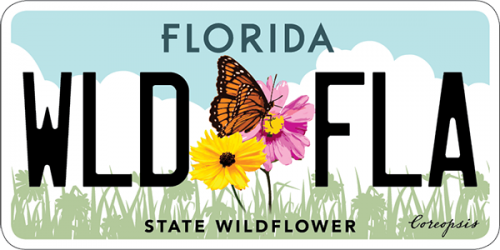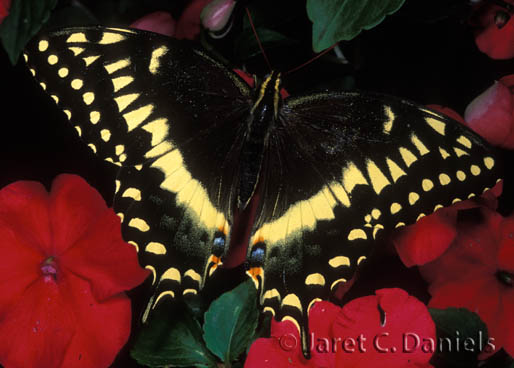- Family name: Papilionidae/Swallowtails
- General description: Brownish-black with broad cream-yellow postmedian band, broken on forewing and entire on hindwing. Hindwing with single tail containing central cream-yellow ray. Forewing with cream-yellow cell bar. Ventral hindwing with narrow yellow basal line parallel to body, and postmedian and marginal orange spots enclosing band of diffuse blue spots. Thorax and abdomen with yellow stripes.
- Field Marks: Single black hindwing tail with central yellow ray; thorax and abdomen black with yellow stripes; ventral hindwing with narrow yellow stripe parallel to body
- Sexes: appear similar
- Wingspan: 78-140 mm
- Life Cycle: Egg: Cream, spherical, laid singly on host leaves Mature Larva: Green above, reddish-brown below with a yellow lateral line and several rows of small blue spots; thorax enlarged with two prominent yellow-rimmed black eyespots Chrysalis: green or pinkish-brown
- Number of Generations: Three generations
- Flight Season: February-November
- Abundance: Common
- Habitat: wooded swamps, moist woodlands, forest margins, fields, meadows, pastures, roadsides
- Larval Host Plants: Red bay (Persea borbonia), swamp bay (Persea palustris), silk bay (Persea humilis)
- Similar Species: Spicebush Swallowtail, Giant Swallowtail
- Additional Information: Adults continuously flutter wings when feeding
- Range in Florida
 The Florida Wildflowers & Butterflies projects at the Florida Museum are sponsored in part by the State of Florida and the Florida Wildflower Foundation, Inc.
The Florida Wildflowers & Butterflies projects at the Florida Museum are sponsored in part by the State of Florida and the Florida Wildflower Foundation, Inc.
